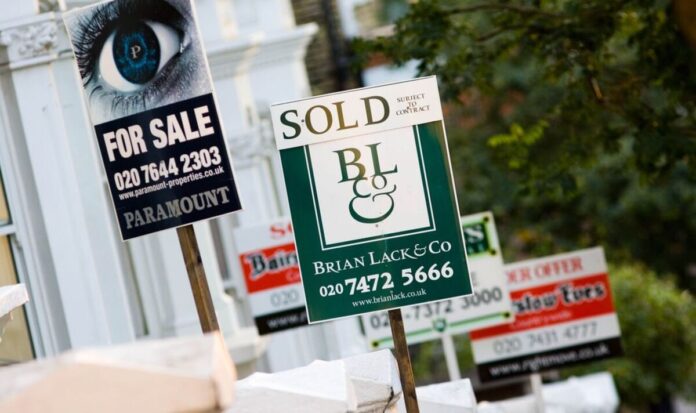House prices drop by £15,500 in some UK areas – here are the locations impacted most (Image: Getty) Average house prices in the UK suffered a monthly fall of 0.3 percent in July, which marks the fourth consecutive drop of the year. The South East and Greater London are the areas facing the most significant downward pressure, with some seeing property values drop by as much as £15,500 in the year to July. However, prices are dropping at a slower rate and first-time buyer activity remains robust, the Halifax House Price Index report indicates. Kim Kinnaird, the director at Halifax Mortgages, commented: ‘Average UK house prices edged down slightly in July, with the monthly fall of -0.3 percent equivalent to a drop of around £1,000 in cash terms. While this was the fourth consecutive monthly decrease, all have been smaller than -0.5 percent. ‘In reality, prices are little changed over the last six months, with the typical property now costing £285,044, compared to £285,660 in February.’ House prices in July were 2.4 percent lower than the same month a year earlier (Image: Getty) Ms Kinnaird added that the annual decline also slowed to -2.4 percent in July, versus -2.6 percent in June. She said: ‘These figures add to the sense of a housing market which continues to display a degree of resilience in the face of tough economic headwinds.’ However, the continued affordability squeeze could mean constrained market activity will persist, which Ms Kinnaird said she subsequently ‘expects’ house prices to continue to fall into next year. Ms Kinnaird said: ‘Based on our current economic assumptions, we anticipate [the fall] being a gradual rather than a precipitous decline. And one that is unlikely to fully reverse the house price growth recorded over recent years, with average property prices still some £45,000 (+19 percent) above pre-COVID-19 levels.’ Looking for a new home, or just fancy a look? Add your postcode below or visit InYourArea According to the Halifax House Price Index, average house prices fell annually in almost all parts of the UK in July, with the only exception being the West Midlands where the average house price remained effectively flat at £250,285. The South East remains the area where house prices are facing the ‘most downward’ pressure. Prices in these areas are down 3.9 percent annually, dropping just over £15,500 in value over the last year (average house price now £382,489). Greater London mirrors the trend, with average property prices down by 3.5 percent annually in the capital (average house price now £531,141). Wales, which saw some of the most rapid growth in house prices during the pandemic “boom”, experienced a 3.3 percent reduction (average house price now £214,495). In Scotland, prices were down by less, at 0.7 percent over the last year (average house price of £201,501) while in Northern Ireland they were down by just 0.3 percent annually (average house price of £185,322). Ms Kinniard said: ‘In particular, we’re seeing activity amongst first-time buyers hold up relatively well, with indications some are now searching for smaller homes, to offset higher borrowing costs.’ Kirsty Wells, director of Saint Leonards-on-Sea-based Blueprint Mortgages echoed this sentiment: “In the past few months, I have had a big increase in enquiries from first-time buyers, who are proving particularly resilient given market conditions. ‘They are in a much stronger position currently as so many people have their properties on the market but can’t sell so building a chain is very tricky, whereas if a first-time buyer can come along and save the day, then they can negotiate a better price. I have seen clients negotiating around five percent off average asking prices recently.” Lewis Shaw, the founder of Mansfield-based Shaw Financial Services , added: ‘First-time buyers are in an incredibly strong position, and it’s not uncommon to see them agreeing on purchases at 10 percent to 15 percent below the marketed price. ‘It must be hard going for estate agents trying to manage vendor expectations. However, this is a sign of the times, and those sellers that don’t take a fair offer now could find they’re much more out of pocket in a month or two.” Conversely, Ms Kinniard said the buy-to-let sector appears to be ‘under some pressure’, though elevated interest rates are just one factor impacting landlords’ business models, together with considerations of future rental market reforms. She said: ‘It remains to be seen how many may choose to exit and what that could mean for the supply of properties available to buy.’


